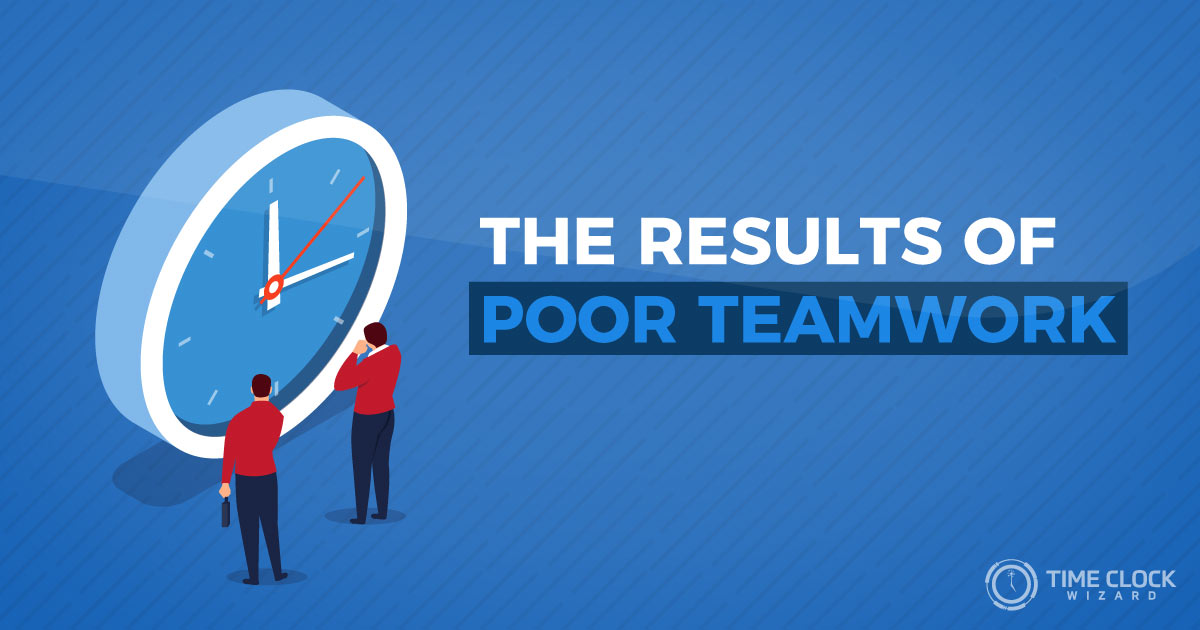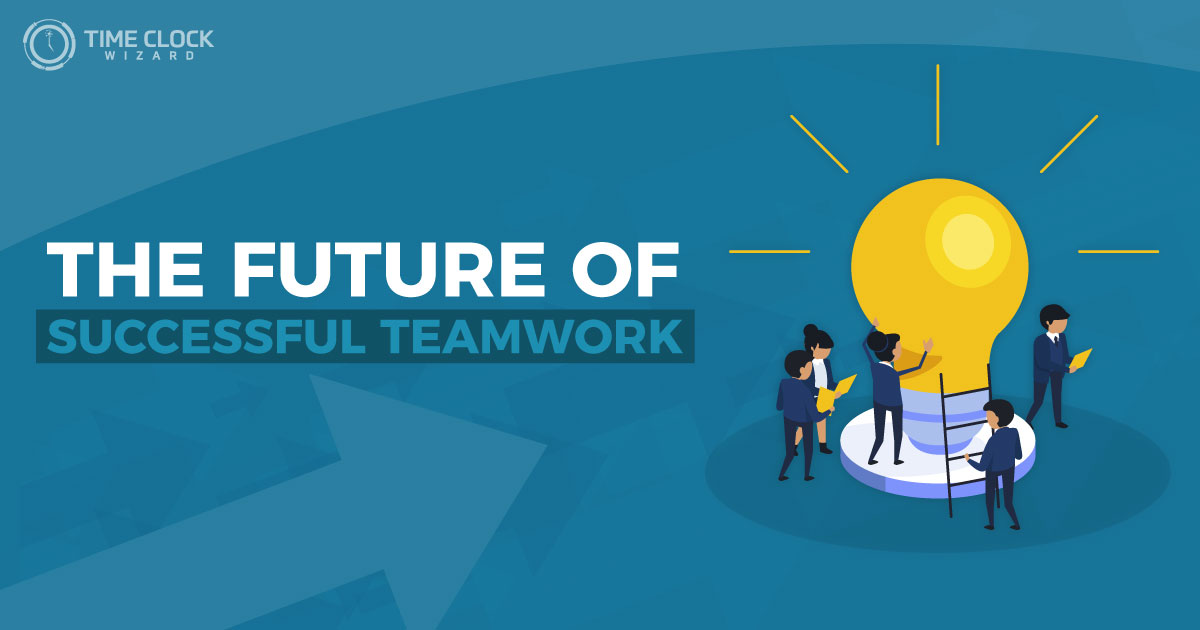
Great teamwork is essential to an organization’s success, especially in today’s increasingly globalized market. As team leaders and HR personnel, this is an axiom you probably know all too well. You’ve learned from experience that individual talent just isn’t enough anymore. Every company has talented people and an abundance of other resources. Otherwise, they would have folded a long time ago. With everything else being equal, it’s the companies who understand the keys to successful teamwork that get to the top and stay there.
Unfortunately, this level of teamwork can’t create itself. It can only come about as the result of planning, hard work, and sophisticated leadership. But what emerges from all this is a wonder to behold– a team that accomplishes what a simple group of individuals never could. Read on to discover just what it takes to engineer this uber productive meeting of the minds.
Capitalizing on Your Mistakes
Do you have a team that consistently underperforms? Does it encounter a constant flow of delays, internal squabbles, and communication breakdowns? Are your individual team members afraid to speak up, buck convention, and innovate? If you answered yes to some or all of these questions, you’re probably lacking the nuanced teamwork you need for success in today’s business climate.
For whatever reason, you weren’t able to combine your individual talents into a purposeful unit. Maybe you didn’t prepare everyone properly. Or maybe inexperience made you miss certain tell-tale signs. The list of possible mistakes could go on and on, but the upshot is that something went wrong and it’s to you to fix it.
This might seem a little harsh. In fact, it probably is. But the best managers– the most successful ones– take responsibility for everything connected to their teams. This includes everything from employee conduct and meeting deadlines to budget control and successful teamwork.
Good Teamwork Through Progressive Focus
That’s why we’ve come up with this guide to effective teamwork. It’s designed to update HR personnel and managers on the keys to successful teamwork and help to apply them in real-world situations. This guide will benefit team managers by detailing exactly what it takes to build and maintain a high-functioning team. Here are the topics we’ll cover:
- The teamwork mindset
- The signs and results of poor teamwork
- What standard operating procedures can do for your team
- Assembling an effective team
- The technology needs of highly productive teams
- Specific tips on how to improve teamwork
You might have noticed that our topics get progressively more specific as you continue to read. We structured our guide in this way on purpose. To make sure the keys to successful teamwork become almost second nature, we’re approaching the subject through progressive focus.
This means we’ll start by describing the thinking that lies at the source of building a highly productive team. Then, we’ll have a look at signs and causes of poor teamwork. After that, we’ll get down to the specifics of managing a successful team. And by the time we’re finished, you’ll be able to use the ‘theoretical’ parts of great teamwork to actually make it happen.
Good Teamwork is a Mindset
In some ways, great teamwork is the result of the right attitude. Yes, it requires a host of other tools and techniques as well, but the right attitude is fundamental to them all. But what sort of attitude is ‘right’ when it comes to taking a group of individuals and turning them into a highly productive team?
The first requirement is that you understand how truly important this level of teamwork is. At an intuitive level, this is something you probably understand all too well. Why? Because if you’re like most department managers, it’s because you’ve seen what can happen when people fail to work as a team. In other words, you’ve started to recognize the value of truly great teamwork by seeing what happens when it isn’t there.
But sometimes, it’s hard to see the forest through the trees. This can make it very to difficult to spot poor teamwork until after the damage is already done. It’s almost like a temporary blindness. By the time you open your eyes, it’s often too late. At this point, you look at the talent you’ve assembled and wonder how it all happened. Or didn’t happen, rather.
Hopefully, this unfulfilled potential will make you reflect on where things went wrong. If so, you’ll need to consider the role you played in the resulting disappointment. As managers and HR people, it’s up to you to weave your individual talent into a team. Of course, some things are beyond your control. And there’s no use beating yourself up over things you couldn’t have prevented in the first place.
Next, we’ll have a look at the negative outcomes of poor teamwork. This will let you locate your mistakes and help you avoid them in the future.
The Results of Poor Teamwork
This might feel like we’re just rubbing it in, but here’s a quick list of what typically happens when you lack good teamwork:
- The team consistently misses important deadlines and ends up scrambling to finish projects
- They encounter the time-wasting work stoppages that lead to harmful delays
- There are too many disgruntled employees and their negative attitudes bring down the entire team
- Conflicts arise too frequently and are difficult to resolve
- Team members display impatience and frustration in their daily work
- People get bogged down in finger pointing and the blame game
- You witness an ongoing parade of power struggles
- Team members work haphazardly and seem to lack a shared vision
- Your team’s dynamic is marked by mistrust and a lack of focus
- Productivity lags and the team fails to achieve the project goals you established
Spotting The Signs of Poor Teamwork
Again, it’s hard to spot some of these energy drainers until after the damage is already done. Usually, this happens because you’re too close to the action. You become nearsighted and fail to notice the problems that plague your team’s everyday workings. Eventually, most managers realize this has happened, but they can’t use what they learn until the next project.
So what’s happening here? How do you finally notice what’s escaped you for so long? You can find the answers to these questions in the consequences of poor teamwork. Negative outcomes force you to take a step back and reflect. And it goes without saying that this realization often comes with a great deal of regret. Fortunately, you can learn from these mistakes and turn this negative into a positive.
How do you learn from these mistakes and prevent them in the future? The answer lies in the reflecting on what you did in aftermath of your team’s poor performance. You recognized the mistakes by taking a step back, and this is exactly what you have to do to prevent poor teamwork in the future.
You just have to do it earlier. These negative outcomes can definitely be prevented, but only if you take a bird’s eye view from the very beginning. And this is exactly what this guide is designed to help you accomplish. In the next section, we’ll have a look at the most general characteristics of successful teamwork.
The Causes of Poor Teamwork
We’ve already established that a bird’s eye view is invaluable to building a truly great team. Hopefully, you’ve learned a great deal from past mistakes– either your own mistakes or somebody else’s. Either way, mistakes are often the best teachers. They’re also the ideal launching pad for the ‘view from above’ you’ll need to improve in the future.
When a project fails to meet expectations, managers are forced to reflect on the decisions that damaged their chances. But recognizing the results of poor teamwork just isn’t enough. You’ll have to drill quite a bit deeper if you want to improve your team leadership skills. In other words, you have t find out what caused the poor teamwork in the first place.
Spoiler alert– poor teamwork always stems from inadequate collaboration. We’ll get into the details in just a bit, but the necessity of great collaboration is the biggest thing you should take away. With this in mind, let’s have a look at how the collaborative process typically starts to break down and how you can fix it.
Poor Collaboration and How It Happens
Corporate teams can vary wildly in size, make-up, and function. The number of team members can range from a few people to a few hundred. When you add virtual teams into the equations, members are often located in geographic areas thousands of miles apart. But no matter what size the team is– or what it’s trying to accomplish– the key to success is finely tuned collaboration.
The comparison might seem silly at first but think about everything that’s involved in a space shuttle launch. Think about the incredible complexities involved in preparing for it. Then, consider the sheer number of people that are necessary to pull off such a huge project. Think about the timing of it all, and how dependent everyone is on the rest of the team’s work. There are also funding issues and weather conditions to take into account.
The list of collaborative necessities could probably go on and on– we’re not astrophysicists or aerospace engineers– but you probably get the idea. To say that everyone has to be on the same page is an understatement. We’re certainly not suggesting that your corporate team’s collaborative process is as complicated as a shuttle launch, but the contours are similar enough to be very instructive.
When the Collaborative Process Breaks Down
There are many different points when the collaborative can start to break down. Sometimes, it’s because one or more individual team members try to dominate the entire group. The results of these attempted coups are usually predictable. Teams become cliquish and internal resentments begin to crop up. Individuals or subgroups start to follow their own agenda instead of the team’s original plan. And once this happens, morale, trust, and productivity can really start to fall off a cliff.
In the rest of this section, we’ll have a look at the most common stress points in the collaborative process. These are the areas where your people can begin to go in different directions. If they stray far enough, the divergence can eventually wreck the collaborative process. Here are seven of the most common areas where breakdowns in collaboration can occur:
1. Employees don’t fully buy into the project
Sometimes, your people won’t care enough about what they’re doing to put in the necessary effort. Usually, this happens when they think the project is boring or ‘beneath’ them. Team members also become disengaged if they don’t see how a project will be of much benefit to them. But whatever the reason, employees are unlikely to work as a team if they’re not fully invested.
The question is what to do about it. The best time to tackle disengagement is before it starts to take root. This means you have to make your expectations clear in advance, preferably at the initial team meeting. Take this time to explain why the project matters and what part it plays in your overarching goals. Then, remind everyone that their individual evaluations depend entirely on the success of the whole team.
2. Mistrust between team members
Bad things happen when your employees don’t trust one another. In order to be effective, your team members have to trust one another enough to discuss their ideas and talk about how they’re feeling. Without trust, people can get isolated and closed off. Mistrust can also create an endless series of unresolvable conflicts. Most importantly of all, mistrust makes true collaboration almost impossible.
To prevent this from happening, make sure your people get to know one another as quickly as possible. Arrange a meeting where everyone introduces themselves and discusses their background. Coach everyone up on better communication and intervene if conflicts become too intense. Regular meetings will also help your team develop mutual trust. Lastly, team outings are another great way for your people to get to know one another and develop more trust.
3. High rates of employee turnover
Locating, recruiting, and training new hires is costly in a number of ways. That’s one of the reasons that companies do everything they can to avoid high turnover rates. But there’s another reason managers don’t like to see high rates of turnover as well. It’s because high turnover rates can do incredible damage to the collaborative process. Similarly, high turnover can also be the result of poor collaboration.
Either way, high turnover is something managers should try to avoid at all costs. You won’t be able to retain every great employee, but there are things you can do to keep overall turnover low. Following the tips contained in this guide can help in this regard, but things like a positive work culture and an employee retention program address turnover directly.
4. Lack of creativity and ‘groupthink’
Innovation and creativity are the driving forces of strong collaboration. Unfortunately, they’re quashed far too often in the corporate team setting. This can happen for a number of reasons, but what you really need to know is how damaging the practice can be.
When managers discourage innovation and creativity, a counterproductive sort of malaise comes over the group. No one wants to disagree with the party line in such an environment. Eventually, your team will lapse into a dangerous habit of ‘groupthink.’ If this happens, you lose access to a potential treasure of great ideas.
That’s why you should encourage debate, disagreement, and creativity. That’s one of the reasons you bring people together in the first place, so why not maintain a culture that allows for the fundamentals of collaboration?
Collaboration and a Sense of Belonging
Analyze the collaborative process a while and you’ll see how complex it can be. A breakdown in any of these areas can clearly lead to a variety of negative outcomes. Unfortunately, once these problems arise, they can spread like wildfire and multiply.
This leads us to one of the most fundamental keys to successful teamwork– inclusion and a sense of truly belonging. People work best when they’re involved in something bigger than themselves. This sense of a higher purpose strengthens commitment and helps people push their ego aside. It also lets them see the interdependencies between team members, especially the way their work affects others.
If people don’t have a sense of belonging, collaboration is bound to suffer. They’ll become withdrawn and isolated. Your team will fall prey to communication breakdowns, lengthy delays, and frequent conflicts. By addressing the potential problem areas in advance, you can foster a sense of belonging. If you start to see someone pulling away from the group, pull them aside and discuss their concerns. Then, coach them up on what they can do to re-enter the fold.
Additionally, you’ll need to address the structural problems that led to an employee’s alienation. The solutions to these problems depend on the situation, but vigilance is fundamental to all of them. You’ll also find ways to foster a sense of belonging in the next few sections. The most important takeaway here is to understand how important a sense of belonging is collaboration and successful teamwork.
Successful Teamwork and Standard Operating Procedure
No discussion of great teamwork would be complete without some mention of standard operating procedure, aka SOP. Like many topics we’ve discussed, you probably already have a decent grasp of this important concept. But in this section, we hope to take this knowledge a little deeper.
First, let’s talk a minute about human nature. Human beings certainly don’t like to feel trapped like a rat in a maze, but many of us appreciate the value of a routine. This is especially true in the workplace.
People work better when they know what to expect and what’s expected of them. The same holds true of the norms they’re supposed to follow and the methods they use for a given task. The daily grind is already challenging enough. But when you throw in a sense of chaotic, it can become practically unbearable.
That’s where standard operating procedure comes in. Just like the name says, SOPs are blueprints for executing a task the same way every time it comes up. We’ll go in a lot more detail in just a little bit, but the essence of an SOP is pretty close to what we just described.
What is a Standard Operating Procedure?
An SOP is a preestablished set of directions for completing a certain task. These directions are formulated in a way that accords with the rules of your industry and your particular company standards. Stand operating procedures are based on methods that have been proven to work. And while they do allow for a little wiggle room, they help to eliminate indecision and let your employees focus on the task at hand.
Designing a standard operating procedure consists of two basic parts. First, it defines the best practices for a given type of project. This includes things like quality standards, systematized processes, and task assignment. Secondly, SOPs codify these directions through detailed documentation. The end result is a set of instructions that are easy to access, repeatable, and consistently effective.
Each company has a unique customer base and every team manager has their own particular styles. Additionally, each industry sector has a different set of regulations and best practices. This is why one company’s set of standard operating procedures is never the same as another. In the next section, we’ll take a look at the benefits of having standard operating procedures in place.
The Benefits of Using Standard Operating Procedures
Hopefully, you now have a little more insight into the importance of standard operating procedures. And you’ve probably already gleaned why they matter so much. But while some of the ways your team will benefit from SOPs is readily apparent, others aren’t quite as easy to see. Here are twenty more advantages you can expect to gain by using standard operating procedures.
-
Increased overall efficiency
-
Fewer redundancies within and between departments
-
Decreases in costly mistakes across the board
-
Less time wasted arguing about how tasks should be executed
-
An established set of methods for conflict resolution
-
A safe, supportive, and respectful work environment
-
Improvements in overall company culture
-
Better communication
-
Easier troubleshooting
-
Proven ways to resolve specific issues
-
Objective tools of evaluation for employees and overall production
-
Precise job descriptions
-
Streamlined hiring and firing process
-
Proven training standards
-
Objective criteria for promotions and pay raises
-
Established norms for disciplinary and/or corrective actions
-
Tighter customer data security
-
Better employee attraction
-
Reduced confusion and better morale
-
Higher profits
As you’ve probably already noticed, standard operating procedures and good teamwork go hand in hand. In fact, it’s actually a ‘you can’t have one without the other’ scenario. Great teams are ones that can make snap decisions in varying circumstances and stay focused on the work in front of them. SOPs give teams the ability to do both of these things. But it also takes teamwork to follow SOPs in a way that gets the best results.
The great thing about the reciprocal relationship between teamwork and SOPs is that it makes them interchangeable to a certain extent. No matter how good your team is most of the time, it’s bound to have some off days. Similarly, some projects have wrinkles that an SOP just can’t iron out. It’s at these moments that teamwork and SOPs can stand in for one another. But before any of this can happen, you’ll have to have the right team. In the next section, we’ll look at how you can build the ideal team.
Building the Right Team
A productive team is one that’s cohesive, flexible, and open to new ideas. Its members understand and accept their roles without being too rigid. They come in prepared and ready to work. Just as importantly, a good team is resilient, accepts criticism well, and offers constant feedback.
Sounds good, right? Of course it does. Who wouldn’t want to work with a team with so much going for it? There’s very little such a team couldn’t accomplish. In short, a team like this is a manager’s dream.
But the team we’ve just described is something that’s difficult to achieve. More than likely, your employees are talented, experienced, and well trained. But in most cases, they’re used to working independently, not as part of a team. And the task of turning these experienced employees into a team falls to you.
So as a team leader, you’re immediately confronted with a sticky dilemma. How do you make someone part of a team without tamping down their individual talent? Well, the answer to this question depends on the situation. But all of these situations have one important thing in common– the need for the right combination of people. During the rest of this section, we’ll look at how to meet the challenge of building the right team.
What to Look For in Prospective Team Members
Hopefully, you’ll have a talented pool to choose from when building your team. Along with experience and a strong work ethic, individual talent is one of the most critical factors in team success. But like we’ve already said, talent isn’t enough to make a great team. In assembling your team, you’ll have to locate people who can apply their talent to a truly collaborative process.
Toward that end, here are the qualities that typify a great team member:
1. Excellent communication skills are an absolute must to be a good team member.
2. The best team players are those who are willing to self-reflect in order to improve.
3. Employees who can accept constructive criticism and make use of it tend to excel in the team setting.
4. People who’ve had team success in the past are likely to have it again in the future.
5. Employees with high levels of emotional intelligence tend to be excellent team players.
As you can see, this is a list of personality characteristics you should look for in building your team. But while these qualities are definitely very important, there are other factors to consider as well. First, you should select candidates who have experience and competency in the types of projects you’ll be working on. Additionally, you’ll want team members with varying skill sets, especially ones that offset any limitations that otherwise appealing candidates might have.
Lastly, you’ll need to consider the overall composition of the team you’re trying to build. How many leader types do you need, for instance? Does your team have the right mix of personalities? Does it exhibit enough variety for you to form subteams without sacrificing too many skills or personality traits? Answer these questions and follow the guidelines above to maximize your team’s chance of success.
Filling Your Team’s Technology Needs
Choosing the right technology is a big part of managing a successful team. Good teamwork begins and ends with great people, but technology provides the tools they need for task management, time tracking, and just staying connected. The only real question is what technology you should choose. Here, we’ll focus on project management collaboration tools. Follow these guidelines to find the exact tools that you need.
Keep everything connected with a collaborative platform
These days, many companies collaborative platforms to achieve the multilayered integration they need to do business. Although their functions and features vary, most collaborative platforms include tools that assist with collaborative teamwork, instant messaging, and task tracking. The most recent versions of these platforms allow for a wide range of social networking activity as well.
Examples of collaborative platforms include products like Asana, Slack, Airtable, and Workfront. These platforms– and many more— are designed to integrate knowledge management tools with company procedures help employees resolve work issues quickly.
Use Time Tracking Software to Manage Your Most Valuable Resource
There are several different kinds of time tracking software available, but their basic purpose is to track and record employee work hours. This software category can include anything from a simple time tracking app to platforms that let you integrate time tracking with project and task management. Here are a few of the best known time tracking tools:
- Mavenlink
- FunctionFox
- Paycom
- Intervals
- Accelo
Use Free Trial Offers to Shop Around
The sheer number of available products can make filling your team’s technology a very difficult process. The best way to start is by identifying exactly what your needs are. That way, you can narrow your choices and start comparison shopping. Another key to choosing the right tech is to aim for simplicity and easy access.
Finally, most software companies offer a free trial period. We suggest you sign up for several of these before you make any final decisions. This will give you time to give them all a test run and receive valuable feedback from your employees.
Eight Tips on How To Improve Teamwork
1. Communicate Openly and Effectively
Good communication is absolutely crucial to successful teamwork. In fact, communicating well is the bedrock of any cooperative enterprise. And whether your team is located all in the same building or distributed across thousands of miles, it’s up to you to set the right tone.
Once you accept the responsibility for good team communication, the question becomes how to accomplish it. Fortunately, there are tried and true methods for fostering just the communication your team needs for cohesion, efficiency, and maximum productivity. Follow these suggestions set the exact communication precedent you want your team to follow:
- Listen closely when people talk with you and encourage your team members to do the same
- Ask appropriate questions and listen to the answers
- Arrange team building sessions that emphasize communication
- Monitor how your team communicates and make any necessary corrections
- Make sure everyone has an equal voice during meetings and other team activities
- Deal with conflicts immediately, before they become even more difficult to resolve
- Point out communication breakdowns as they arise
- Prioritize communication as often as you can
2. Clarify the team’s purpose, values, and identity
When people know their ultimate goal, it becomes much easier to get there. That’s why it’s important to get clear on your team’s mission within the first few days that you start working on a given project. Then, explain that everything your team members do should get them closer to their ultimate goal. You should also emphasize what sort of behaviors block them from fulfilling their team’s mission.
Shared values are also critical to successful teamwork. Your team’s values should be an extension of what matters to your company as a whole, but some modulation is to be expected. Establish what your team values are as early on, making sure to get as much feedback as possible. Then, monitor how closely your team members’ actions adhere to or contradict these values.
The Elements of a Company Value System
Though each team will put varying amounts of emphasis on each, here are a few of the most common building blocks of a company’s value system:
- Commitment to one another, to clients, and to the company as a whole
- Being reliable– showing up ready to work every day
- Demonstrating a consistent work ethic
- Staying open to new ideas
- Working efficiently
- Placing principles before personalities
- Going beyond tolerance to embrace and encourage difference
Taken together, your team’s mission and value make up the bulk of your team identity. The personalities of individual team members factor into your identity as well. Once you’ve established a firm team identity, it becomes much easier to work toward common goals.
3. Create an environment that fosters mutual respect
Mutual respect is another must-have for successful teamwork. In fact, nothing significant can be accomplished without it. When people treat one another respectfully, true collaboration becomes possible. Mutual respect also reduces time wasting conflicts and makes them easier to resolve when they do arise.
But how do managers and HR personnel create an environment of mutual respect? Simple courtesy is a good place to start, but true respect goes much deeper than just saying please and thank you. Here are a few ways to go beyond simple courtesy and encourage mutual respect:
- Set the right precedent by treating your employees with respect at all times
- Intervene if conflicts begin to escalate
- Use team building activities to help team members understand perspectives different than their own
- Arrange cultural sensitivity training sessions
- Establish and enforce standards of employee conduct
- Formulate a ‘one person talks while the others listen’ policy
- Explain to your staff how dependent they are upon one another for group success
- Be fair and impartial at all times
This list will expand should expand as time goes on, but following these guidelines will make for an excellent beginning.
4. Treat team members as individuals
Every team member must adhere to the same company standards, but you should treat them like the individuals they are. Each employee has a different set of experiences and a unique perspective. When you show that you value these qualities, your employees will more like part of the team.
First, take the time to get know your employees. Listen when they talk and ask unobtrusive questions. Then, ask for their feedback on work issues and take their opinions seriously. Lastly, be sure to follow up on any questions or concerns they might have as time goes on.
Take these steps and you’ll build trust, establish rapport, and increase motivation. Treating people as individuals is also the best way to get them to buy into your team’s overall mission. Paradoxical as it might sound, individualized treatment of your employees will increase their sense of belonging. And like we said up above, a sense of belonging is everything to successful teamwork.
Finally, difference is the reason you build a team in the first place. Employee difference is what makes a team more productive than a set of people who work independently. Therefore, it’s in your best interest to acknowledge the distinct qualities all your employees have.
5. Establish standards and team norms
Whether they’re implied or explicit, every team has developed a set of norms that govern their interactions with one another. It’s inevitable that they would do so. It’s common knowledge that good effective communication between team members and managers is critical to the functioning of a team.
The way that a team makes decisions, distributes tasks, and keeps its members accountable is one of the most significant determiners of their success. That’s why you should never allow norms to develop of their own accord. By establishing standards in advance, you go a long way toward creating a positive work culture.
You also have to make your team members aware of these standards. The best way to do this is during the very first team meeting you have. That way, everyone can get off on the right foot. As time goes on, you may need to alter these norms a bit, but it’s a still good idea to start practicing them right away.
Then, once these norms are put into place, team members will have guideposts to follow in their daily interactions. They also make great barometers of employee behavior, in that everyone knows what is and isn’t acceptable. This makes confronting and correcting a negative behavior that much easier. The end results are fewer conflicts, higher morale, and better productivity. In short, established norms allow people to focus on the work at hand.
6. Encourage resistance, innovation, and creativity
No manager wants a team of people who always say yes. That sort of validation might pump up your ego, but it will get you nowhere fast in terms of production. Today’s corporate teams face complex and novel challenges. That’s why old ways aren’t always best. To meet the challenges of today’s global economy, you need as many new ideas as you can get. You need fresh perspectives, innovation, and creativity too. To put it bluntly, you need to encounter and cope with resistance.
But to get the best results, you’ll actually need to encourage this kind of resistance. You’ll need to create an environment where employees feel comfortable giving voice to ideas, concerns, and frustrations. This means taking your people seriously and trusting them enough to listen when they have something to contribute. It also means putting your ego aside and approaching every project with an open mind.
Here are some ways you can encourage employee creativity. First, you have to listen. You have to listen when an employee questions your processes or mentions a new way of doing things. It also helps if you ask questions and follow up on any ideas that you think have merit. Another thing you can do is to set aside time for ‘idea bouncing’ during your regular meetings. Use a rotating schedule to give everyone time to explain their new ideas in a safe setting.
7. Recognize and reward team-oriented behaviors
Most companies center their recognition and reward systems on individual performance. The same usually holds true with promotions, training opportunities, and pay raises. Unfortunately, this is an approach whose time has passed. It’s easy to understand why this kind of system is outmoded when you consider its overall effects.
When employees are rewarded or celebrated for their individual accomplishments, there’s a lot less incentive to work as a team. In striving to be compensated for stellar individual work, employees will abandon their team roles and develop their own agenda. Obviously, this is the exact opposite of teamwork and you’ll need an actionable plan to keep everyone working toward shared goals.
The solution lies in coming up with ways to recognize and reward team-oriented behaviors instead of individual ones. Start by establishing well-defined team goals. Then, set up a reward system that centers on achieving these team goals. Lastly, you should emphasize the role that team outcomes play in individual evaluations, pay raises, and promotions.
8. Make room for fun
Productivity dips when work becomes drudgery, so it’s important to inject a bit of fun into it once in a while. This will break up the inevitable monotony of working on the same type of project again and again. Fun activities will also give your employees a chance to catch your breath during times of stress and upheaval. Here are a few things you can do to drum up some enthusiasm and lift employee morale:
- Take a field trip to a state park, museum, or an amusement park
- Arrange a potluck dinner or picnic
- Throw a good old fashioned office party
- Participate in pressure-free team building workshops
- Take everyone to a local sports event
- Arrange a goofy awards ceremony
- Sponsor a little league team and attend some of the games
This is just a quick sample of the fun activities companies can do to blow off some steam, but you know your people better than we do. So take one of these suggestions or come up with something else they’ll enjoy more. The choice is up to you. All that really matters is that your people have a chance to decompress and interact with each other in a non-work setting.
Turning Good Teamwork into a Company Norm
In a perfect world, you’d already have great teamwork in every part of your company. Unfortunately, we live in a world where good teamwork is often the exception instead of the rule. We also live in a world where high-level teamwork doesn’t happen by accident. It only happens through planning, vigilance, and practice. And it’s up to you to make sure all of it happens.
Don’t be too discouraged though. Once you know how to improve teamwork, the process of doing it becomes significantly less daunting. Start putting the ideas you’ve learned here into practice immediately for best results. Successful teamwork is something that builds on itself over time, and it will eventually become your company norm.
The Future of Successful Teamwork
Successful companies adapt. In fact, adaptability should be included in the very definition of success. This is especially true in the business world of today, which is marked by great technological change and accelerated globalization. So a company’s ability to adapt to changing conditions is more crucial to their enduring success than ever.
But great companies take things a step further. They adapt before market conditions change. In other words, they anticipate these changes and react accordingly. In order to do this, however, you have to have a strong foundation in place. And while a variety of things factor into this foundation, great teamwork will always be an integral role in the bedrock of any enduring company.
Flexibility and Enduring Success
Actually, it’s safe to say that teamwork will become even more important in the coming years. That’s why it’s critical to organize your company in a way that’s conducive to excellent teamwork. We’ve just spent a great deal of time discussing everything that goes into this optimal organization, but you have to be open to change. Even though successful teamwork is an abiding company need, the ways you achieve it can’t ever be static.
Let’s put it another way. Every aspect of the business world is constantly changing– products, technology, overall market conditions, etc. If your company wants to stay competitive, it will have to keep up with these changes. And although the need for great teamwork will never go away, what actually qualifies as great teamwork is likely to change. In short, maximum flexibility is a must.
This guide has given you the raw materials you need now and into the future. In discussing the keys to successful teamwork, we’ve provided you with a strong foundation. Generally speaking, these keys aren’t likely to change very much. But that doesn’t mean the details will stay the same. That’s why you have to be flexible going forward. This guide has given you the recipe for excellent teamwork but adjusting it to what the future demands is entirely up to you.










